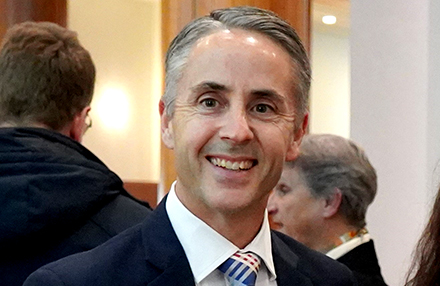Recently, Australian Minister for the Environment and Water, Tanya Plibersek, announced the Federal Government is investing millions to reach their aspirational goal of protecting 30% of Australia’s land mass by 2030.
It’s a noble target, and I urge Ms Plibersek to look to Tasmania as an exemplar on how responsible land management can occur.
Here in Tasmania, we know that land management is a balancing act – weighing up the needs of the environment, the community and the economy.
If one of these key metrics are out of whack, much like a three-legged stool, it will fall over. And our state successfully shows the world how that balance works in real life.
In Tasmania, we’re already well ahead of the Federal Government’s 30% target, with more than 50% of our forests permanently protected in parks and reserves.
And only a tiny percentage of the remaining forests are harvested in any year. As we always point out, only 14 out of every 10,000 trees are responsibly harvested in any 12-month period – the majority of those in private and public plantations.
It’s also important to remember that Tasmania’s working forests are natural, renewable and biodegradable. Native forests and timber plantations are net absorbers of greenhouse gases, and forestry products store this carbon and lock it away for the life of the product.
And what’s even better? It’s renewable. In Tasmania, every single tree harvested, both plantation and native, is replaced by either regenerating native forests or through the cycle of plantation harvesting. And that tree captures more carbon as it grows again.
But to achieve that three-legged stool balance we need to understand how Tasmania’s forestry industry supports our communities and our state’s wealth. Discounting the value we give to our communities and lifestyle doesn’t tell the whole story.
While most of the state’s forests are protected, those that are used for forestry, whether that be through plantations or managed regrowth, make a huge difference to our community and our economy.
Forestry creates jobs, especially in rural communities. Our forestry businesses allow families to stay in the communities they grew up in, providing an income for thousands of local Tasmanians, in the places their families and support networks are.
In fact, over 5,000 people in Tasmania are employed by forestry either directly or indirectly. Our jobs are not just in the harvesting of trees. We employ nursery workers, transport companies and environmental experts as part of our daily work. And that doesn’t include the thousands of workers who can support themselves in our forestry communities.
Supermarkets, childcare, schools, restaurants, plumbers and electricians are just some of the jobs that are created in rural and regional Tasmania when forestry jobs exist.
As well as supporting our regional and rural communities, forestry plays an important role in the challenges Tasmania faces today. We know there’s a huge demand for housing across the state, and forestry is key in meeting that demand.
Environmentally friendly homes require radiata pine framing and plywood for the substrates, hardwoods for the floors, windows, doors, benchtops and stairs, MDF and chipboard for kitchen/laundry cabinets and wardrobes; and treated pine for the fences and landscaping. That’s without even going into their furniture needs, packing boxes and paper products.
And Tasmanian forestry is great for our state’s economy. In the latest reporting period, the direct value of output by the Tasmanian forest industry at the point of sale of primary processed products was $712 million. This figure rises to more than $1.2 billion when considering the flow-on-effects generated in other industries as a result of spending by the forest industry.
This total includes more than $270 million in the Cradle Coast region, more than $450 million in the Northern region and more than $420 million in the Southern region.
Forestry is a cornerstone of sustainable economic development in Tasmania, offering a myriad of direct and indirect benefits to our community.
Its role in job creation, revenue generation, industrial support, ecosystem services, and tourism underscores its significant contribution to economic prosperity and the overall well-being of the state.
Tasmanians are rightly proud to have already met the Federal Government’s lofty land management goals. And we should also be as proud to have surpassed these aspirational goals while still powering our economy and protecting our communities. The three-legged stool analogy is alive and well across our beautiful state.
Nick Steel is Chief Executive Officer of the Tasmanian Forest Products Association






